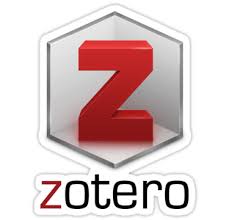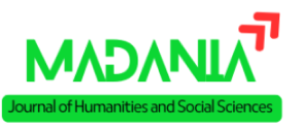Author Guidelines
- The manuscript should be related to Islamic studies, an original work, non-plagiarism, and have not been published or not in the publication process in other journals.
- The manuscript should be written in English/Indonesian and using Microsoft Word.
- The manuscript should be between 4000-9000 words in length. This includes all text, for example, the abstract, references, all text in tables, and figures.
- Citations and references were written using reference manager software (Zotero/Mendeley) with the Chicago Manual of Style 17th style edition (full note).
- The identity of the manuscript requires; the title (the title should be short, concise, clear, and reflect article content (max. 15 words), full name(s) of the author(s), affiliation, email, abstract (150–200 words, at least it includes; academic anxieties, research objectives, research methods, research results, and implications), and keywords (3-5 words or phrases).
- The manuscript contains an Introduction, Research Method, Results and Discussion, Conclusion, and References.
- The introduction should encompass contextual information, your present research position, and other studies on comparable topics. It is essential to include a discussion on the connections between your research and the work of other researchers. Conducting a thorough literature review, particularly focusing on the most pertinent and recently published academic articles in reputable journals, is imperative.
- Research Method section describes the steps taken to execute the research or study. Therefore, it is necessary to show in detail to the reader why the method used is reliable and valid in presenting research findings. The research methods section should be able to explain the research methods used, including how the procedures are implemented, an explanation of the tools, materials, media, or instruments used, an explanation of the research design, population, and sample (research targets), data collection techniques, instrument development, and technique of data analysis. Writing subtitles in the method should be included in the paragraph instead of bullets or numbering. For qualitative research such as classroom action research, case studies, etc., it is necessary to add the presence of researchers, research subjects, and informants who helped along with ways to explore research data, location and duration of research, as well as a description of checking the validity of research results.
- Results and Discussion, this section discusses research findings supported by important data from data collection and analysis using theories/concepts and previous research/literature reviews from relevant references. This section can also be divided into several relevant sub-sections containing a discussion of data and analysis. Apart from this pattern, the author can use the pattern to separate the results and the discussion. The RESULTS contain the main provisions in writing research or study findings as follows: 1) present the research or study findings briefly while still providing sufficient detail to support conclusions, 2) may use tables or pictures but do not repeat the same information, by providing narration at the bottom of the table or picture so that the reader can understand the tables or pictures presented by the author, and 3) each research finding or study must be appropriately interpreted using standard spelling. Data analysis processes such as statistical calculations or hypothesis testing processes need not be presented; only the analysis and hypothesis testing results must be reported. The author can use tables or graphs to describe the research results or studies found verbally by providing narration or comments at the bottom of the tables or graphs and referring to previous research results in reputable scientific journals internationally and nationally.
The DISCUSSION section aims to (1) answer the problem formulation and research or study questions; (2) show how the findings were obtained or found; (3) interpret the findings; (4) link research findings or studies with established knowledge structures; and (5) bring up new theories or modifications to existing theories, by comparing the results of previous studies that have been published in reputable journals. In answering the formulation of the problem or research questions, the study's results must be concluded explicitly regarding previous research. Interpretation of research findings or studies can be made using empirical logic based on existing theories or previous research results in reputable journals, both international and national. In contrast, findings in the form of reality in the field are integrated or linked to the results of previous studies or with existing theories. For this purpose, the author must refer to reputable international journals (Scopus) and reputable national journals (SINTA 1-6). - Conclusion provide the author's remarks as a closing statement. It could be a final conclusion from your discussion, analysis, and recommendations for further research projects. In this section, you may give your acknowledgment to people and parties whose support makes your research possible.
- References are written using the reference manager application (Mendeley or Zotero) with the Chicago Manual of Style 17th edition (full note). The literature in the references contains only the sources referenced or included in the article. The minimum number of references is 16: 80% taken from national and international reputable scientific journals and 20% from other supporting sources (Times New Roman 12Pt, Regular, 1.0 Spacing, space before 0pt, space after 6pt). Examples of writing the references:
- Drake, Susan M., and Joanne L. Reid. “21st Century Competencies in Light of the History of Integrated Curriculum.” Frontiers in Education 5 (July 14, 2020): 1–10. https://doi.org/10.3389/feduc.2020.00122. (Article in online journal)
- Ghofur, Abd, Joel C. Kuipers, and Askuri. “Instructional Design: Multi-Site Study of the Integration of Islam in Science Teaching in Java, Indonesia.” Indonesian Journal of Islamic Education Studies (IJIES) 4, no. 1 (June 29, 2021): 70–84. (Article in a print journal)
- Klein, Julie Thompson. “Learning in Transdisciplinary Collaborations: A Conceptual Vocabulary.” In Transdisciplinary Theory, Practice, and Education: The Art of Collaborative Research and Collective Learning, edited by Dena Fam, Linda Neuhauser, and Paul Gibbs. Cham: Springer International Publishing, 2018. https://doi.org/10.1007/978-3-319-93743-4. (Book Section)
- Qomar, Mujamil. Pendidikan Islam Multidisipliner, Interdisipliner, dan Transdisipliner. Malang: Madani Media, 2020. (Book)
- Rabasa, Angel. “Islamic Education in Southeast Asia.” Hudson Institute, September 12, 2005. http://www.hudson.org/research/9814-islamic-education-in-southeast-asia. (Web Page)
- Nasrullah, Aan. Wawancara. Interview by Juni Iswanto, April 21, 2022. (Interview)
- The manuscript should be prepared according to the following author guidelines and Template. The writing template can be downloaded here.
- Manuscript sent in the form of Ms. Word, submit to: https://lptnunganjuk.com/ojs/index.php/kartika/about/submissions





